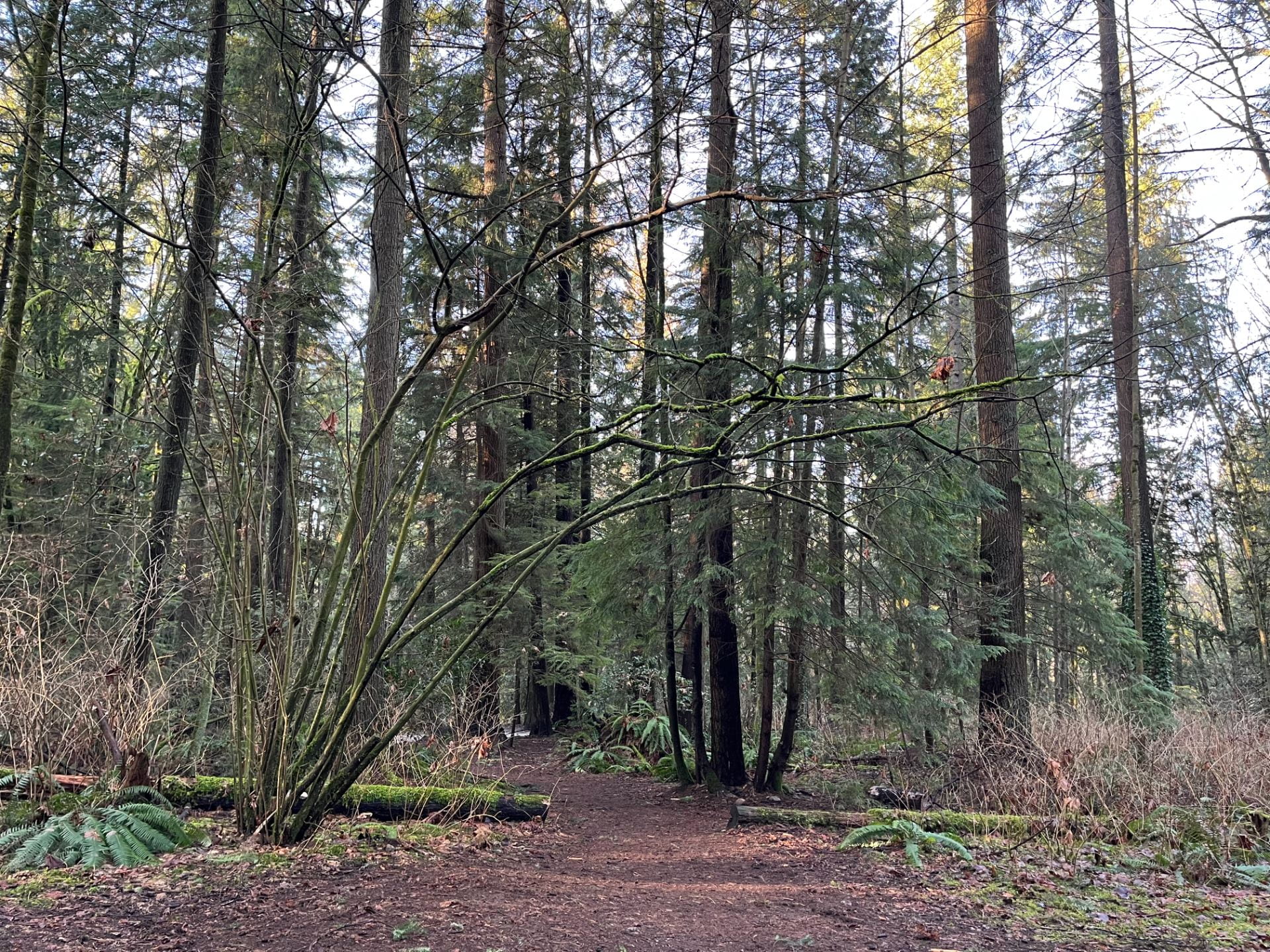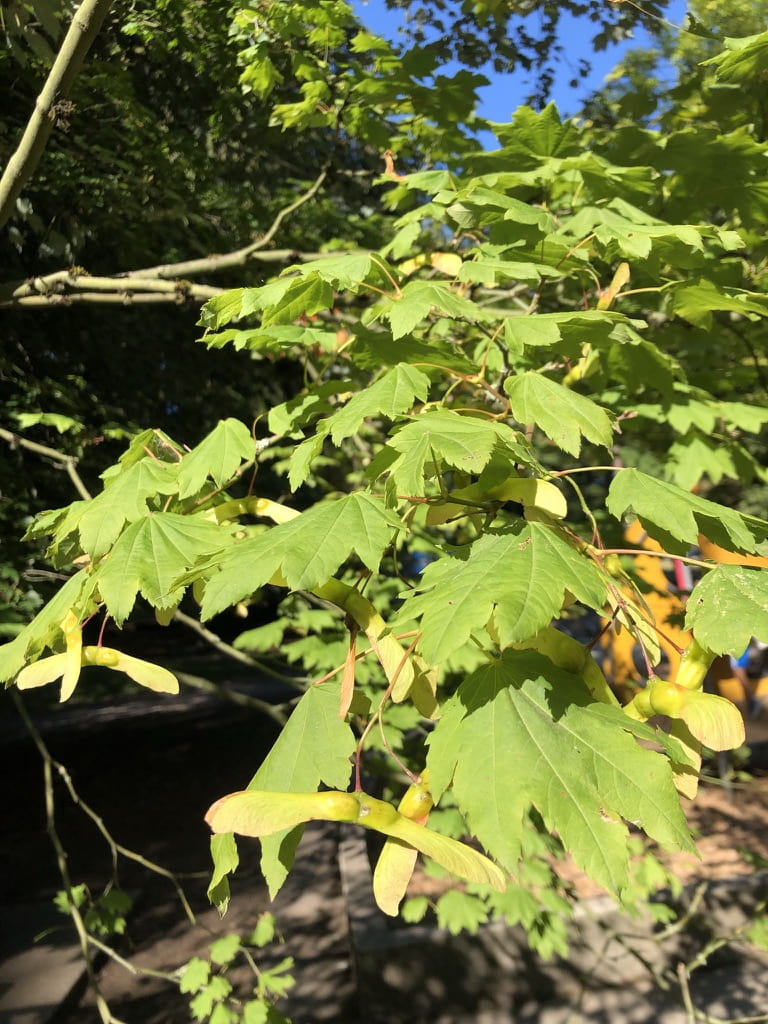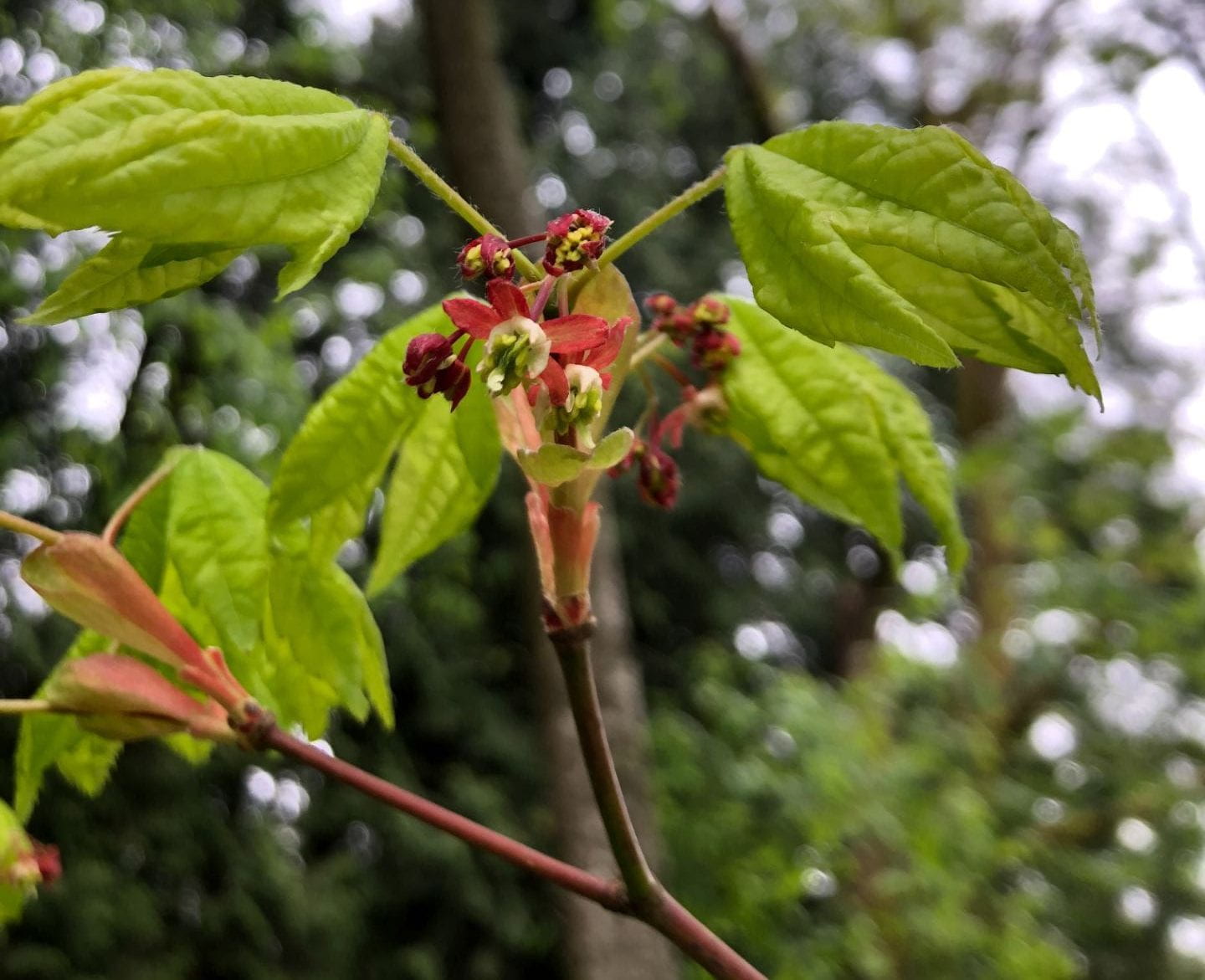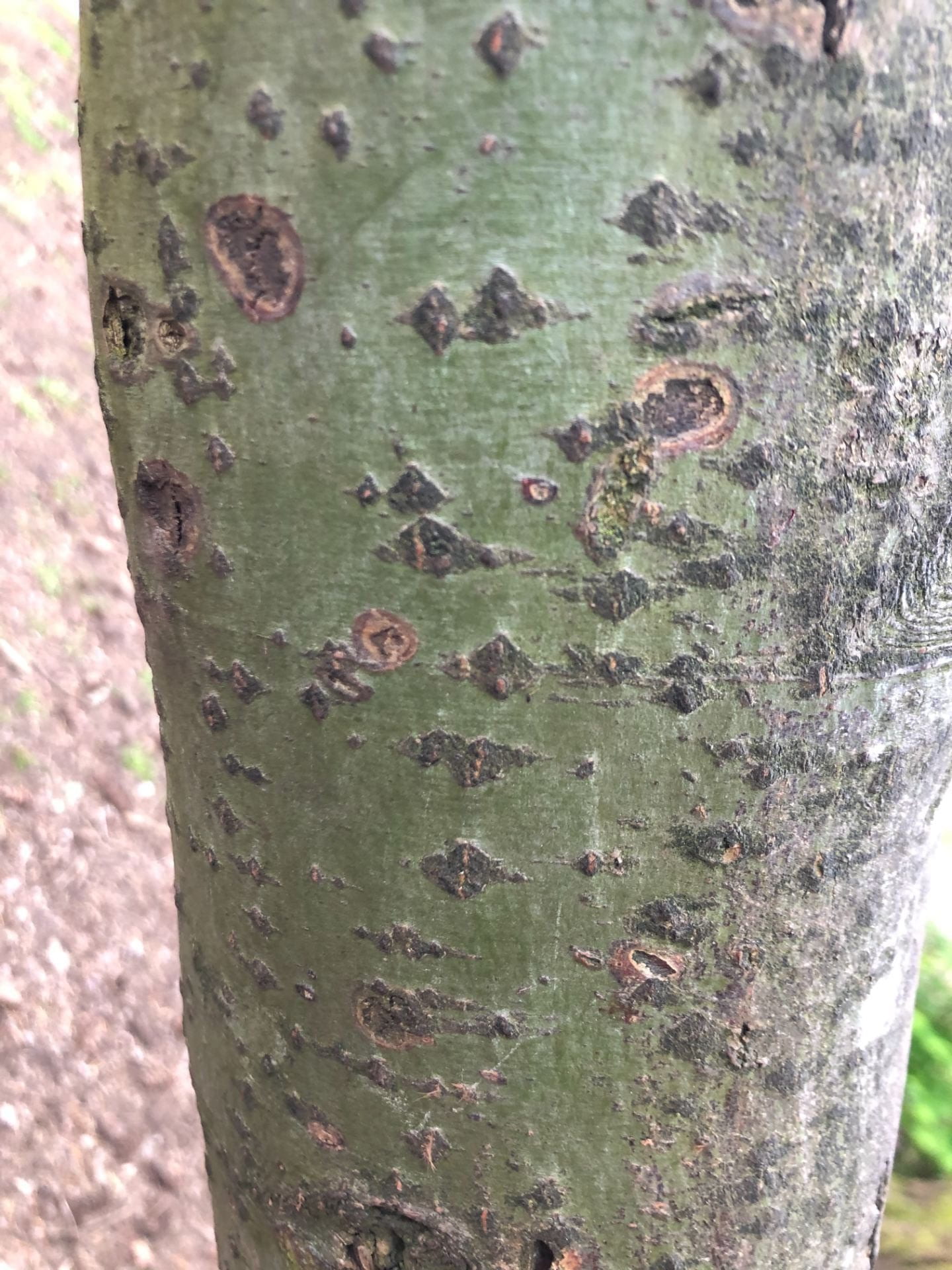Vine Maple
Last updated May 24, 2023. All photos by the author.
There are many maple trees in our province, a mix of native species and introduced species. The native species are bigleaf maple, vine maple, and Douglas maple. The introduced species I have noticed most often are Norway maple, silver maple, Japanese maple and paperbark maple. One thing I have learned recently is that not all maple trees have typical “maple-shaped” leaves! I find that bigleaf maple and vine maple are the easiest to identify, especially in urban forests. Vine maples can be identified year-round, even when they don’t have any leaves, because of their interesting growth habit and green bark. Vine maple is described as a deciduous shrub or small tree, so you don’t have to look too far up to find its identifying features.



Vine maple, Acer circinatum, is a native species that, like all maples, makes a dry fruit called a samara. It may be easy initially to confuse some varieties of Japanese maple, Acer palmatum, with vine maple but hopefully these pictures will help you avoid confusion.
In the spring (the following photos are from April) vine maple starts to unfurl its bright green leaves and attempt to attract pollinating insects with its delicious red-bracted flowers. If you are lucky enough to be near a vine maple when it is just starting to flower, you can taste the nectar by licking a flower. There is so much nectar at times it looks like the flowers are crying slowly. I saw flies collecting the nectar, tricked into spreading pollen by the offer of carbohydrate-rich food.





Vine maples have very interesting bark, very different from the other trees it is normally found around. The ones I observed had multiple textures and colours of bark on the trunks of a single tree. The following photos are of different trees.



In mid-August I saw an eastern grey squirrel (invasive!) feasting on the vine maple seeds. In the video, notice also the angle at which the trunks are growing. (Sorry, I don’t know how to imbed a video you have to download to view).
Squirrel eating vine maple samaras video

When it finished, I ventured closer to see what remained:


Vine maple was used by many Indigenous People throughout vine maple’s range. The wood was used for bows, frames for fishing nets, snowshoes, cradle frames, woven baskets, spoons, and knitting needles. The wood was also burned for fuel and the charcoal could be mixed with oil to make a black paint. Although not a “food”, the bark was boiled to make a tea for colds.
So head outside at any time of the year and find yourself a vine maple tree (or shrub!)
BOOKS I READ:
“Acer circinatum.” Vancouver Tree Book: a Living City Field Guide, by David Tracey, Pure Wave Media, 2016, pp. 102-3.
“Maples.” Gardening with Native Plants of the Pacific Northwest Third Edition, by Arthur R. Kruckeberg and Linda Chalker-Scott, Greystone Books, 2019, pp. 82-84.
“Vine Maple.” Luschiim’s Plants a Hul’q’umi’num’ (Cowichan) Ethnobotany, by Luschiim Arvid Charlie and Nancy J. Turner, Harbour Publishing, Madeira Park, British Columbia, 2021, p. 86.
“Vine Maple.” Plant Technology of First Peoples in British Columbia, by Nancy J. Turner, Royal British Columbia Museum, 2019, pp. 127-128.
“Vine maple.” Tree Book: Learning to Recognize Trees of British Columbia, by Roberta Parish and S. M. Thomson, Canadian Forest Service, 1994, pp. 116-119.